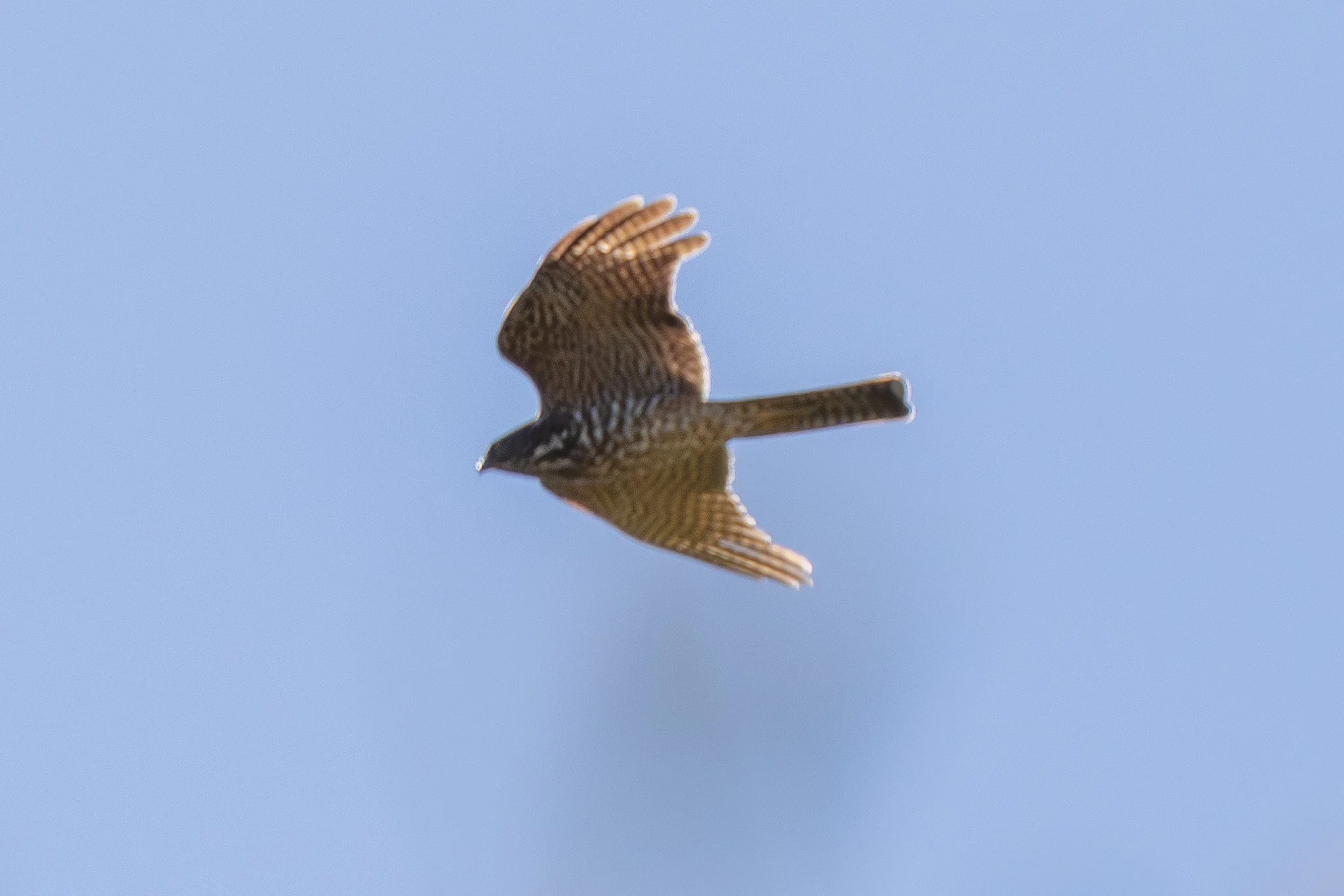It was not possible to survey the whole site last week at Vallances Road, near Mullimbimby in the Northern Rivers Region of New South Wales, as a fox eradication program was in progress. So bushland and farm paddocks adjoining the Brunswick River could not be accessed. Nevertheless the one kilometer of Vallances Road leading to the waste treatment plant yielded 60 species including a Collared Sparrowhawk, White-throated Honeyeaters, and Red-backed, Variegated and Superb Fairy-wrens. That total didn’t include any water birds apart from some Australian Wood Ducks up in a tree.
On arrival we were greeted by a flock of six King Parrots feeding on the roadside. The numbers increased to about a dozen with a small flock of Eastern Rosellas feeding nearby.
A solitary Olive-backed Oriole.
As always the identification of this bird as a Collared Sparrowhawk as opposed to Brown Goshawk was the subject of spirited discussion. The verdict of Collared Sparrowhawk was based on the long tail, square at the end with slight indentation and the bulging secondary feathers. Also perhaps a rounded head but difficult to tell from this photo.









































































































